 Few places captured the raw glamour and excess of 1970s New York quite like Studio 54. At a time when the city pulsed with disco rhythms and cultural experimentation, this Midtown nightclub emerged as the ultimate stage for celebrity encounters, boundary-pushing style, and a party atmosphere unmatched anywhere else.
Few places captured the raw glamour and excess of 1970s New York quite like Studio 54. At a time when the city pulsed with disco rhythms and cultural experimentation, this Midtown nightclub emerged as the ultimate stage for celebrity encounters, boundary-pushing style, and a party atmosphere unmatched anywhere else.
Its rise was meteoric and its fall dramatic, leaving behind a legacy that continues to shape how nightlife is remembered.
Studio 54 began with a simple but ambitious idea. In November 1976, Billboard magazine reported that Steve Rubell and Ian Schrager planned to transform an old Broadway theater into a new nightclub called Studio 54.
It would soon become one of several high-energy discotheques operating in Manhattan, yet none would eclipse its cultural reach.
 Through their company, Broadway Catering Corp., Rubell and Schrager invested $400,000 into an extensive renovation that reimagined the former theater into a space built for spectacle.
Through their company, Broadway Catering Corp., Rubell and Schrager invested $400,000 into an extensive renovation that reimagined the former theater into a space built for spectacle.
The transformation was both technical and theatrical. Designers constructed a spacious dance floor, added a sweeping balcony, and installed a dedicated disco booth.
Mirrored surfaces, floating vinyl platforms, and rows of light bars amplified the club’s immersive feel. The old orchestra section could now seat 250 people, while the balcony accommodated another 500.
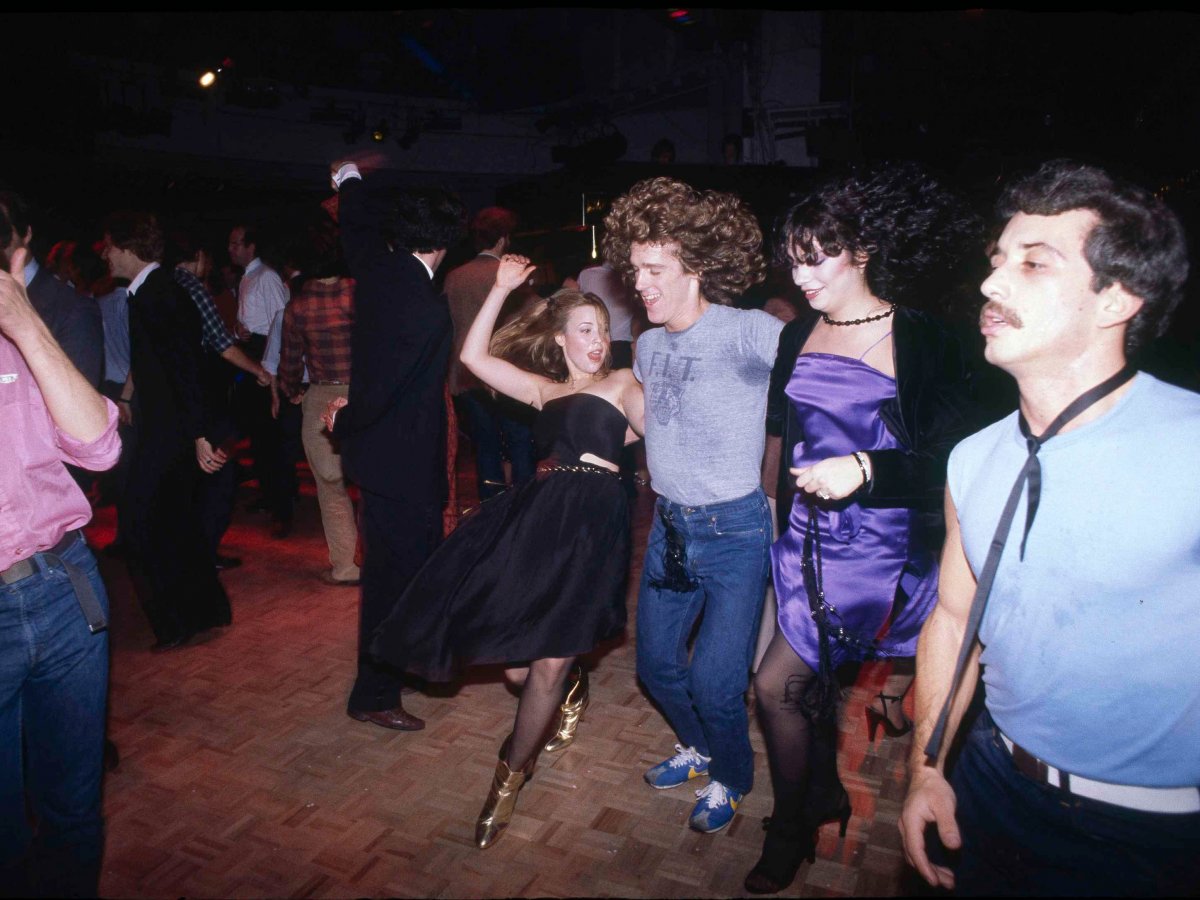 The lighting system—so complex it required three operators—featured twelve towering 16-foot poles fitted with pulsating lights.
The lighting system—so complex it required three operators—featured twelve towering 16-foot poles fitted with pulsating lights.
Above everything hung a 30-by-40-foot cyclorama capable of projecting galaxies, volcanic eruptions, and glowing horizons.
One of the club’s most recognizable symbols, a backlit moon and spoon, was created by Aero Graphics and quickly became synonymous with the Studio 54 brand.
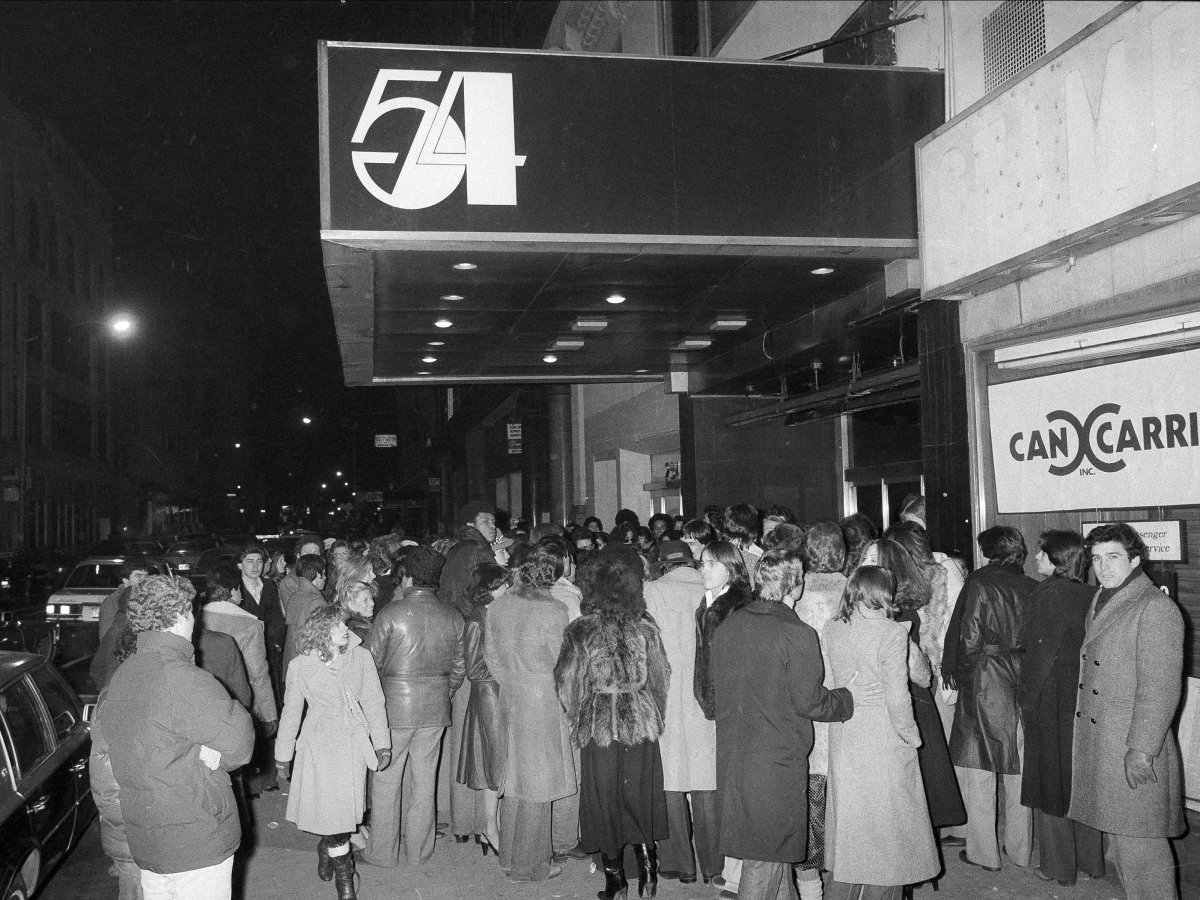
Crowds linger outside the entrance to Studio 54 in New York, Nov. 6, 1979.
Studio 54 officially opened its doors on April 26, 1977, with workers finishing last-minute touches just hours before guests arrived.
Although the venue’s maximum capacity was around 2,500, an estimated four thousand people pushed to get inside on opening night.
Its fame accelerated almost immediately—helped in no small part by a now-iconic photograph of Bianca Jagger riding a white horse across the dance floor.
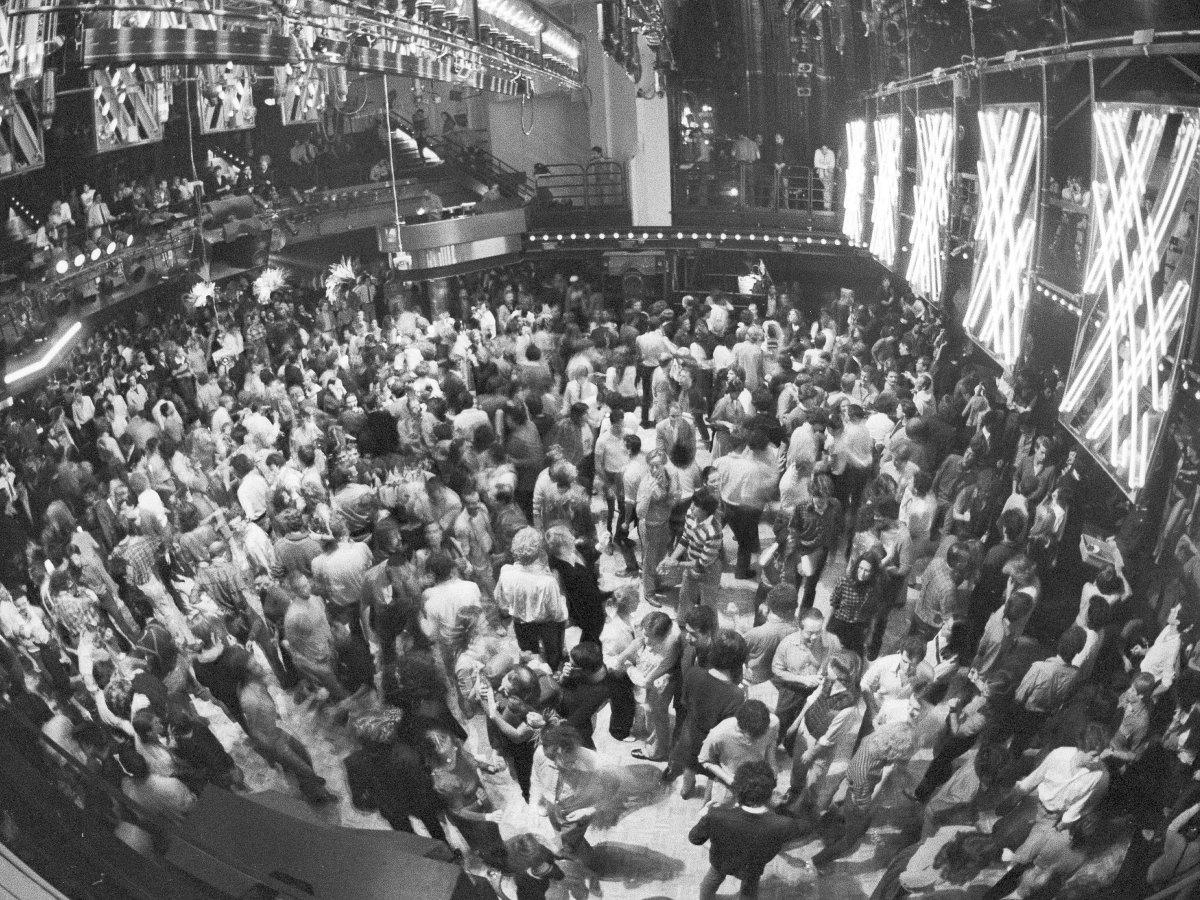
The dance floor is crowded with dancers gyrating to a disco beat at New York’s Studio 54, Nov. 6, 1979.
Within a month, the club was averaging two thousand guests per night despite being open only five days a week. By late 1977, the financial success was impossible to ignore.
As New York magazine columnist Dan Dorfman reported, Rubell boldly claimed that “only the Mafia made more money” than Studio 54. The club generated roughly $7 million in its first year alone.
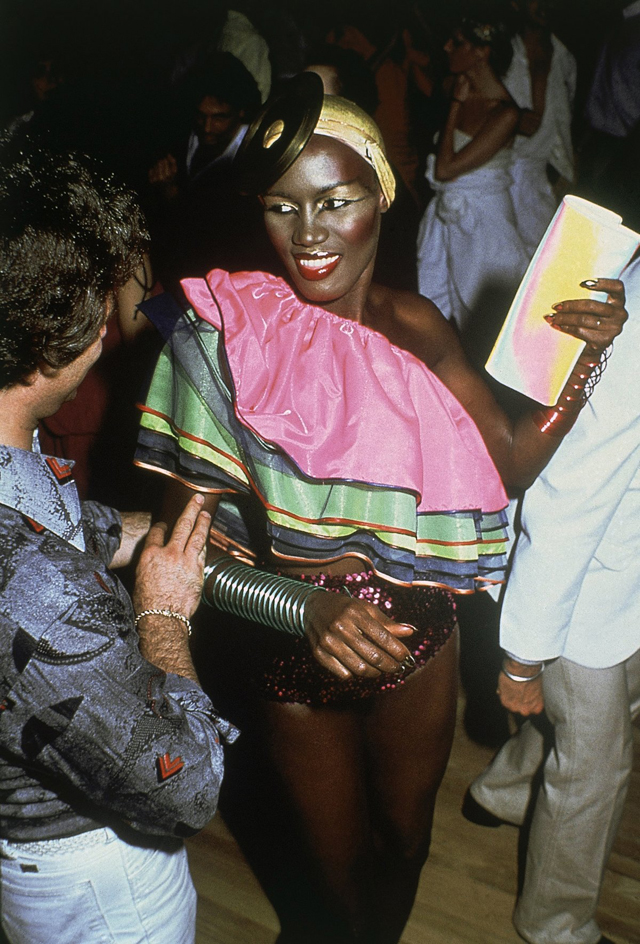
Singer Grace Jones at Studio 54 in New York in March 1979.
Entry into Studio 54 quickly became a coveted symbol of social status. Standard admission cost $7 or $8, though annual memberships offered discounted rates.
Weekends and performance nights commanded higher prices, and the final decision about who made it inside always rested with Rubell.
Celebrities were whisked through without delay, but the general crowd faced strict and often unpredictable scrutiny.
A 1977 Wall Street Journal article noted that “very beautiful” women were frequently admitted, while men arriving alone were almost always turned away to discourage unwanted behavior.
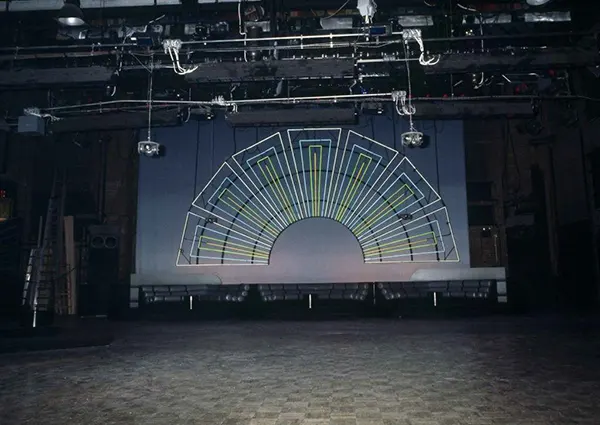
Neon decoration in front of an empty dance floor at New York’s Studio 54 disco, shown 1978.
Prospective guests were unofficially sorted into four categories, ranging from the hopeless “No Goods” to the privileged “No Fuck-ups,” who enjoyed instant entry. Rubell openly reveled in this exclusivity, once boasting, “I turned away 1,400 people last Saturday.”
The selective door policies sometimes veered into the absurd. Writer Anthony Haden-Guest famously noted that the doormen “propelled themselves into a comedy universe” with their theatrical decisions.
Rubell once told a “ravishingly beautiful woman” she could enter free if she removed all her clothes; she complied and later required hospitalization for frostbitten nipples. 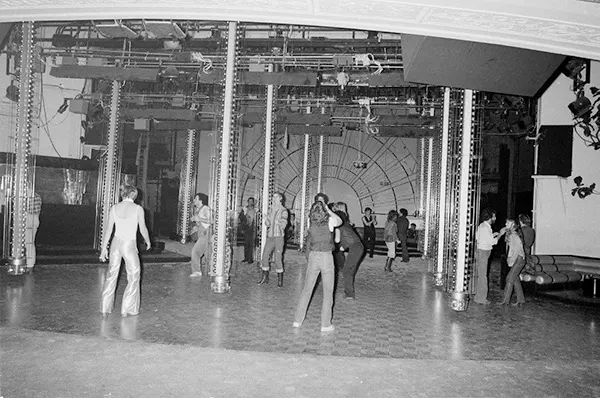
This is a general view of the scene on the dance floor at New York’s Studio 54 disco with just a few dancers on the floor, Jan. 17, 1978.
Tensions on the sidewalk occasionally erupted into violence, with rejected guests attacking doormen or even brandishing weapons. Security teams routinely cleared nearby trash cans as a precaution.
Inside the club, the atmosphere was electric. Nights typically began around 10 p.m., reached full swing by midnight, and wound down between 4 and 6 a.m.
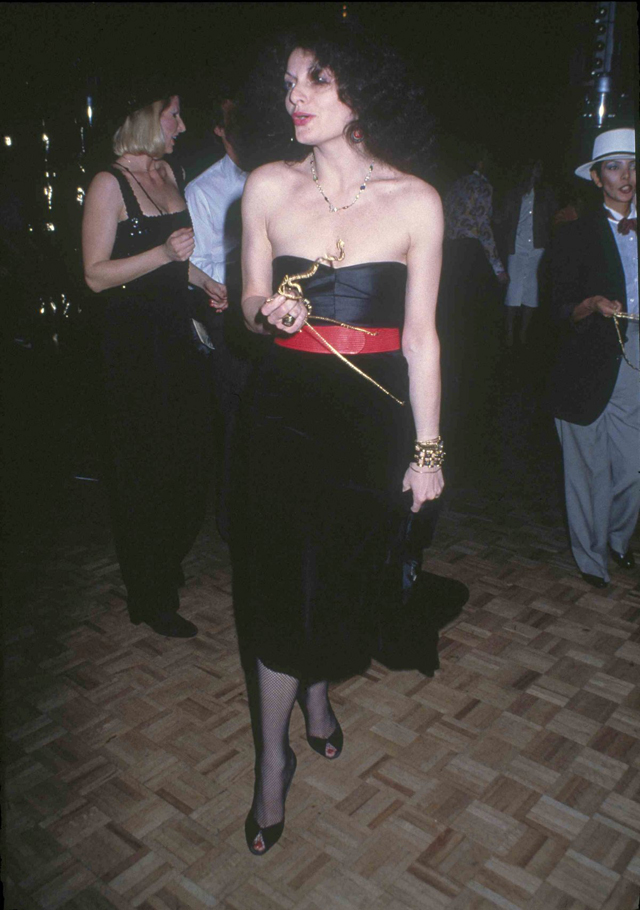
Designer Diane von Furstenberg appears on the floor at New York’s Studio 54, March 1979.
While the celebrity presence drew headlines, Rubell maintained that most patrons were ordinary people seeking a night of escape.
The Washington Post described the crowd as “a mix of punks, hairdressers, socialites, and suburbanites,” while The New York Times observed that Studio 54 was “tolerant of errant squares.”
Andy Warhol captured its spirit perfectly, calling it “a dictatorship on the door but a democracy on the dance floor.”
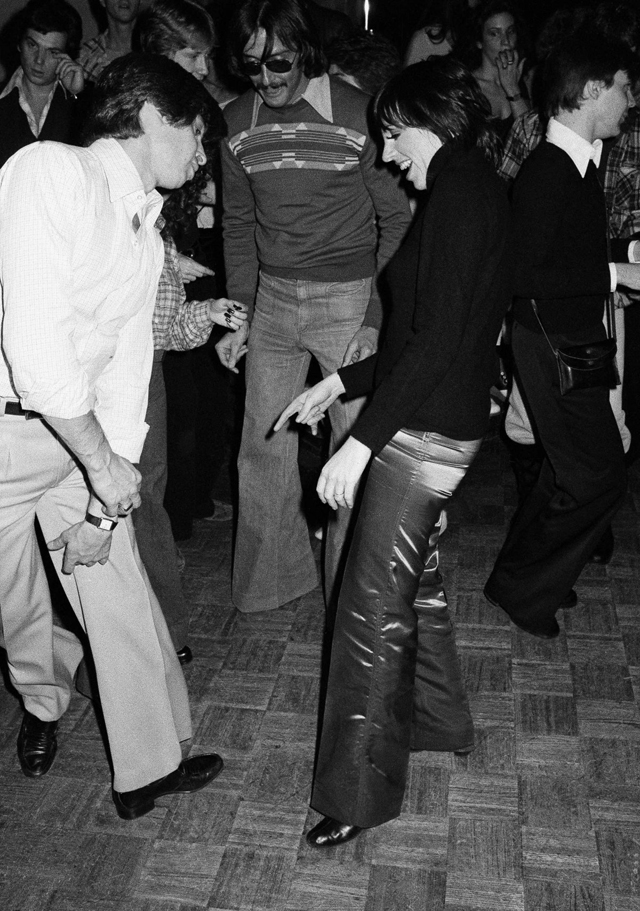
Actress Liza Minnelli teases an unidentified man about his shoes as they meet on the dance floor at New York’s Studio 54 at night on Saturday, Nov. 19, 1977. Liza declined the opportunity to dance with the man because of his shoes.
Although the club enforced a strict photography ban to protect privacy, some images still circulated—among them a notorious photo of Margaret Trudeau, wife of Canada’s Prime Minister, caught without underwear.
As Studio 54’s myth grew, so did its reputation for hedonism. Guests openly used club drugs, and sexual encounters unfolded in dim corners, private rooms, and the shadowy balcony.
The Wall Street Journal remarked that many women appeared like “beneficiaries of a fabulously lucky genetic selection,” while many men carried “an aura of self-esteem born in the knowledge that one can successfully choose among the select.”

A man in tattered denim dances at New York’s Studio 54, March 1979.
Behind the glamour, however, serious operational issues threatened the club’s future. Studio 54 operated without a proper liquor license at opening, instead relying on daily “caterers’ permits” intended for one-off events.
The club also lacked a certificate of occupancy and a public assembly license, leading informants to tip off authorities.
On May 21, 1977, the New York State Liquor Authority raided the venue for illegally serving alcohol.
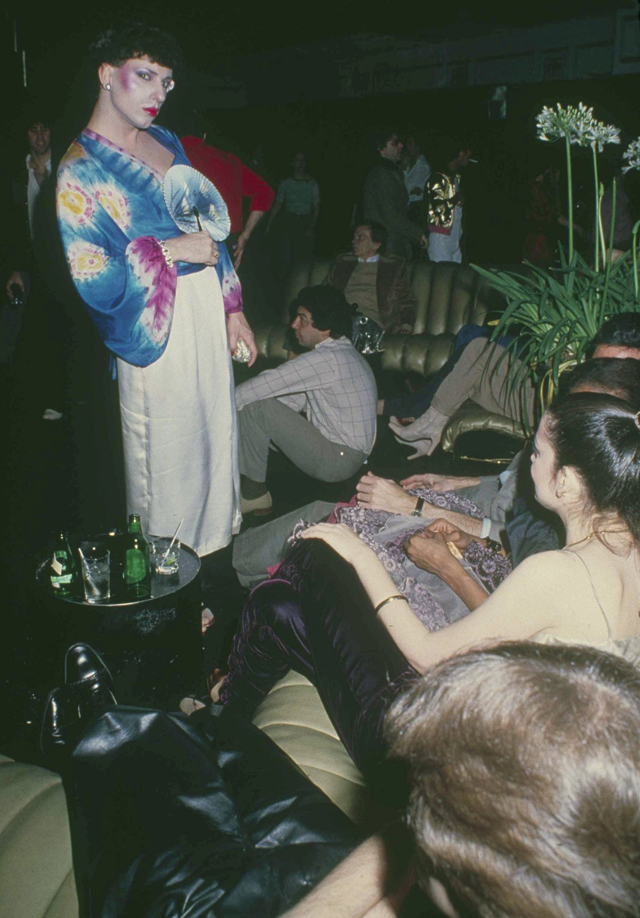
Brightly attired patron uses a fan to cool off in the lounge at New York’s Studio 54, March 1979.
The most damaging blow came in December 1978, when a disgruntled former employee contacted the IRS claiming Rubell and Schrager were hiding profits and storing cocaine in the basement.
Shortly afterward, IRS agents raided the building and arrested both men. Remarkably, Studio 54 still operated that same night.
By June 1979, a federal grand jury indicted Rubell and Schrager for skimming $2.5 million—nearly 60 percent of the club’s receipts over two years.
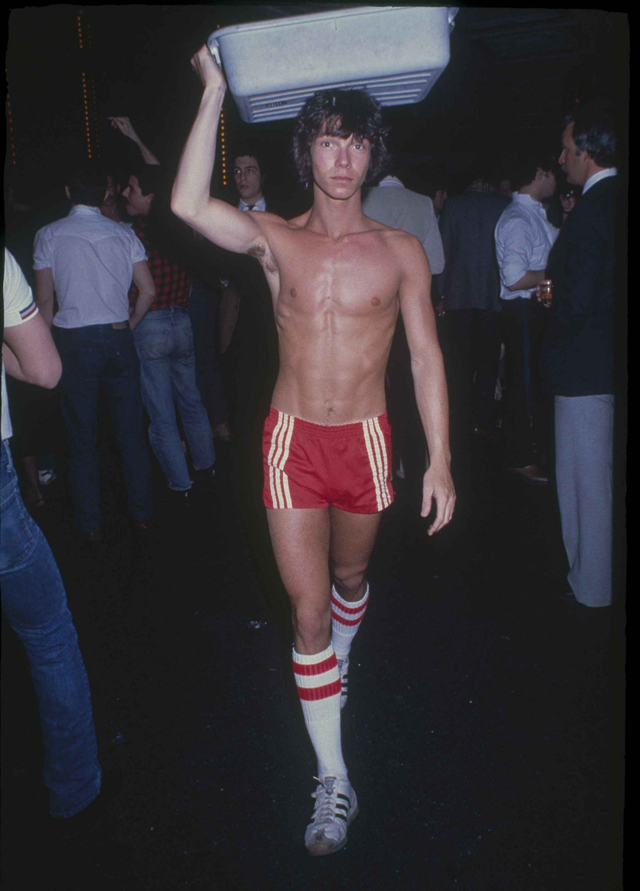
A typically attired busboy at Studio 54 in New York carries a container on his head, March 1979.
They pleaded guilty in November 1979 after a New York magazine cover story exposed the lavish “party favors” they had given to friends.
Studio 54 closed in 1980 following their convictions, bringing the club’s first and most legendary era to an abrupt end.
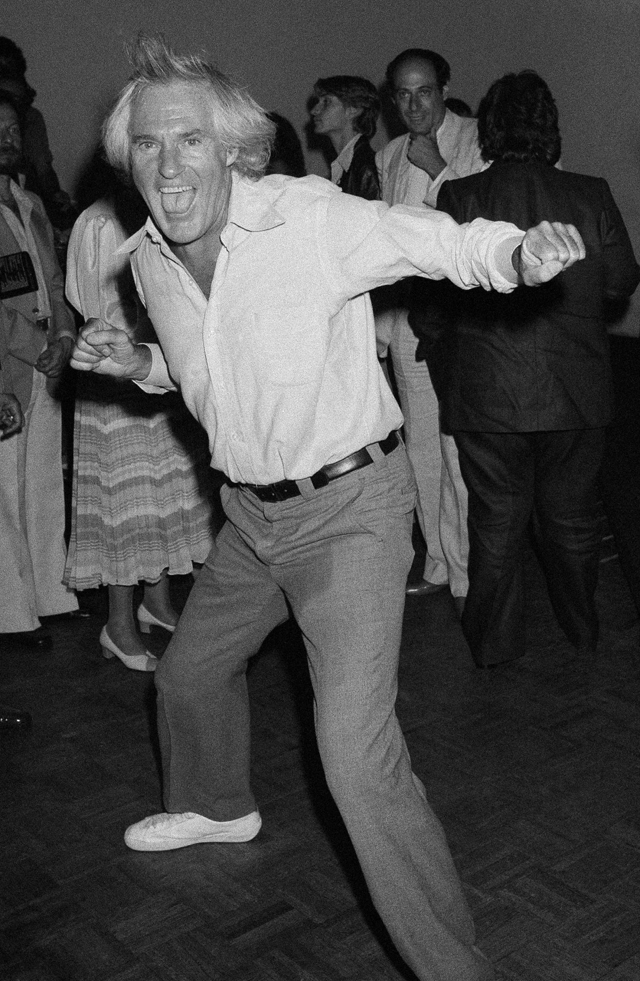
Dr. Timothy Leary, the former psychedelic drug guru puts his all into dancing at New YorkÂs studio 54, Thursday, July 20, 1978 while he boogies at a post premier party for the opening of Sgt. Pepper’s lonely hearts club band!
Though it later reopened under new management, the scaled-back venue never recaptured the original magic.
By the late 1980s it had transformed into the Ritz rock club, and in 1994 it became the Cabaret Royale.
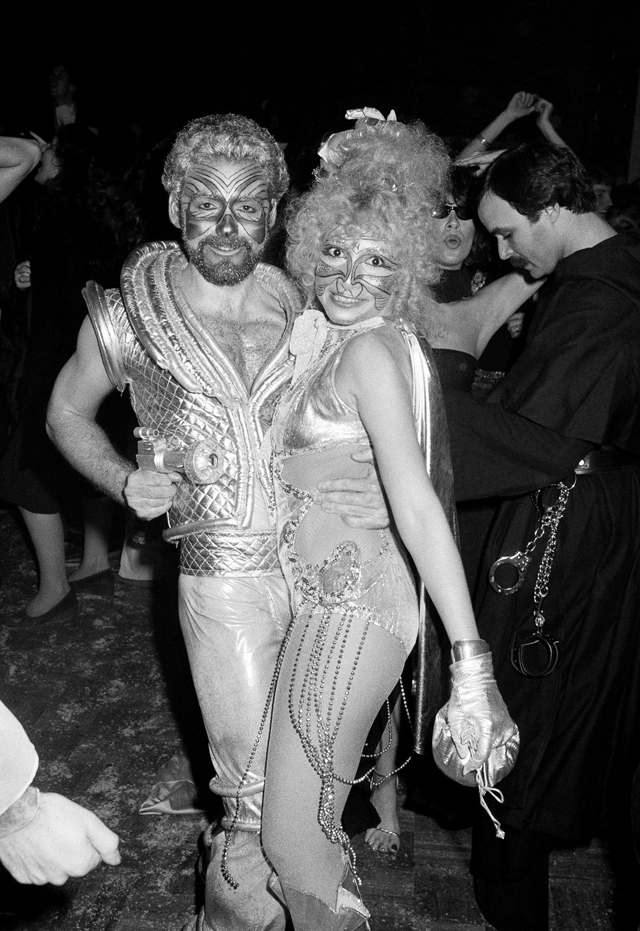
Halloween revelers at New York’s Studio 54 dance the night away in costumes ranging from burlesque to stellar. The party was held at the New York Discoteque Oct. 31, 1977.

Eartha Kitt, left, and her daughter, Kitt McDonald are seen at New York’s Studio 54, June 22, 1978.

British pop singer Elton John, left, Lana Hamilton, wife of actor George Hamilton, and rock singer Rod Stewart arrive at New York’s Studio 54, July 10, 1978, to celebrate at a party given by RCA Records, who signed John to a contract with the recording company. Others are unidentified.

Jack Ford, left, son of former President Gerald Ford, talks with singer Alice Cooper at New York’s Studio 54 on February 16, 1978.

Margaret Trudeau, estranged wife of Canadian Prime Minister Pierre Trudeau, dances at New York’s Studio 54 discotheque at night on Monday, Jan. 17, 1978.

Unidentified disco dancer at Studio 54, New York City, June 22, 1978.

Dancer Rudolf Nureyev initiates nine-year-old Ricky Schroder into the delights of disco dancing at Studio 54 in New York on Sunday, April 2, 1979. Ricky had previously attended the preview of the remake of The Champ in which he stars with Jon Voight.

Actor Omar Sharif kicks up his heels on the dance floor at New York’s Studio 54 on Tuesday, Nov. 30, 1977 with dancing partner Bulle Ogier, a French actress. It was Omar’s first to the popular nightspot.



Women dressed in black dance at Studio 54 in New York, March 1979.

A woman in a gold glitter cast on her leg arrives at New York’s Studio 54 for a night of disco dancing, March 1979.

Actress Monique van Vooren struts her stuff at New York’s Studio 54, March 1979.

Ballet star Rudolph Nureyev, center in brown leather pants, chats with unidentified friends at New York’s Studio 54, March 1979.
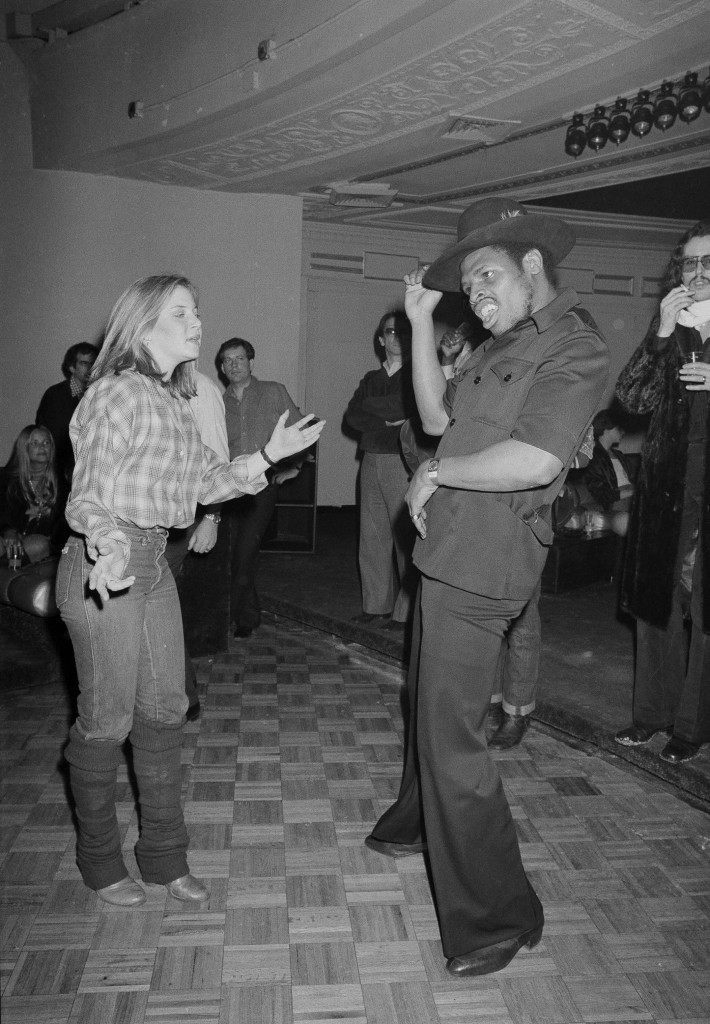
Leon Spinks, the new heavyweight champion of the world, dances at Studio 54 in New York, Feb. 22, 1978, with Lisa Dawn Gold of Philadelphia.

Television actress Kristy McNichol dances with Stew Star at New York’s Studio 54 disco, May 6, 1978. Ms. McNichol currently stars in the TV series “Family”.

Rock star Elton John is shown with actress Stockard Channing at New York’s Studio 54 disco, June 13, 1978, during a party for the opening of the movie “Grease”.
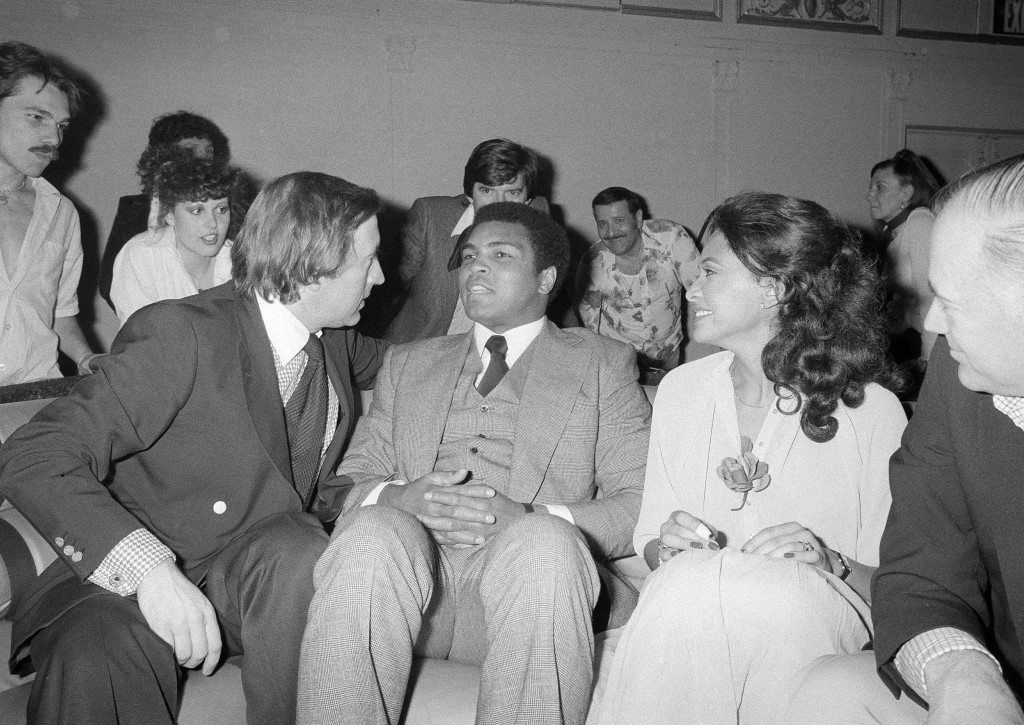
Muhammad Ali, despite having been defeated as the world heavyweight boxing champion, still finds himself the center of attention during a visit to New York’s Studio 54, March 25, 1978. Chatting with Ali is television interviewer David Frost, left. Others are unidentified.

A couple dances back to back on the dance floor of New York’s Studio 54, 1977.

A general view of the dance floor as revelers dance the night away at New York’s Studio 54 disco, 1977.

Young actress Tatum O’Neal, daughter of actor Ryan O’Neal, enjoys the ride as dancer Sterling Saint Jacques gives her a lift during an evening of dancing at New York’s Studio 54, April 23, 1978.

Actress Ali MacGraw and her companion, movie producer Larry Spangler, make the scene at New York’s Studio 54, Oct. 10, 1978. MacGraw came, danced and went barefoot.
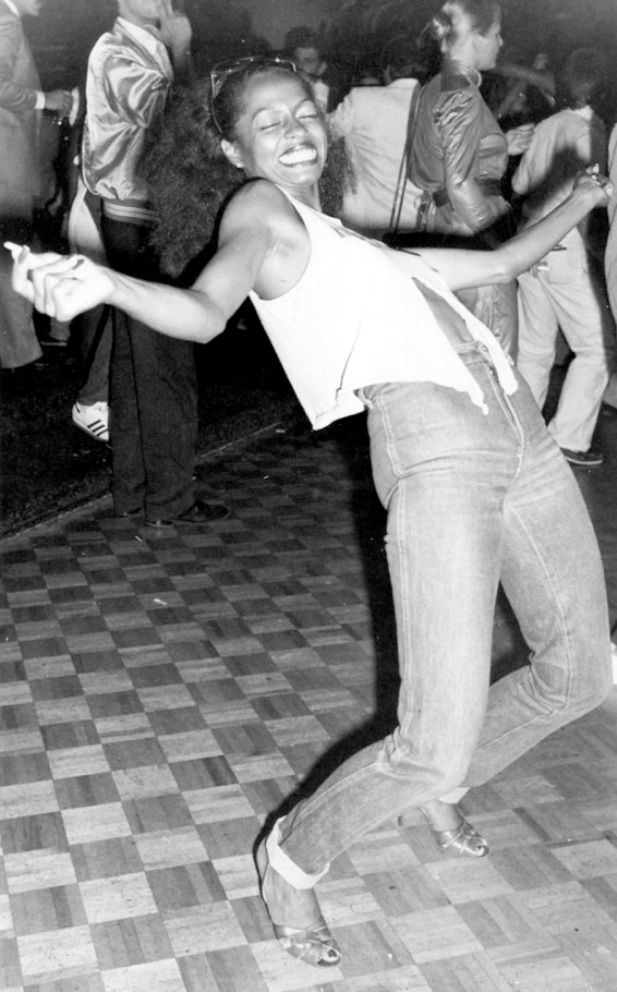
Diana Ross, 1979.
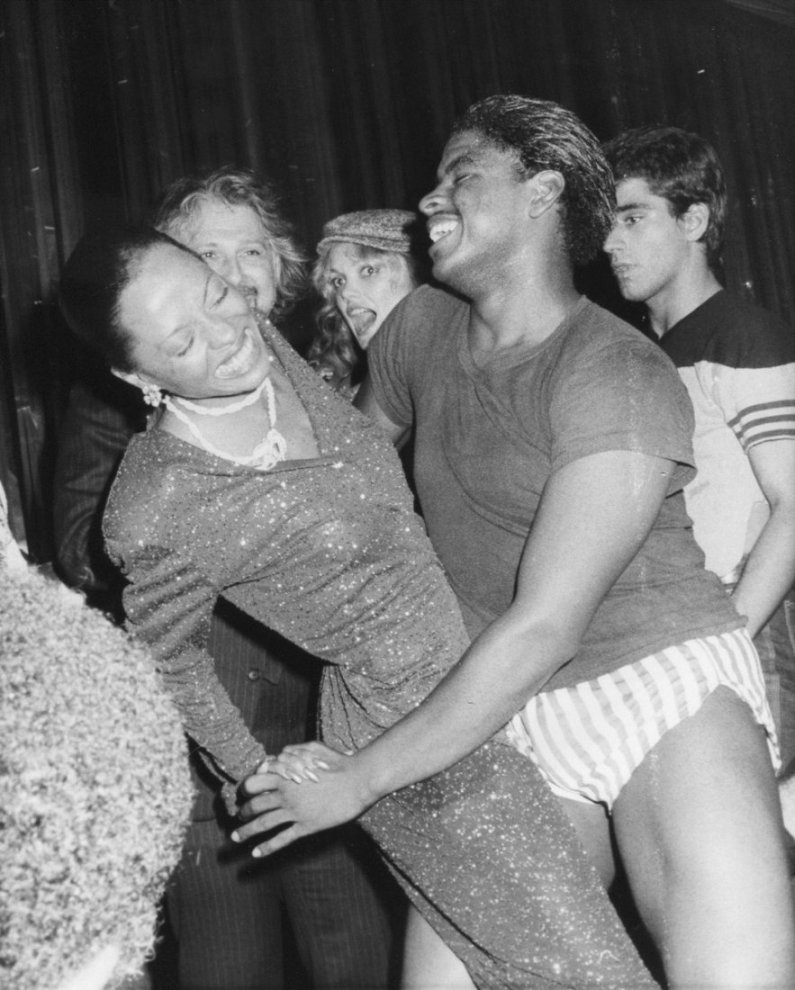
Diana Ross, Billy Goodson and Salvatore DeFalco.
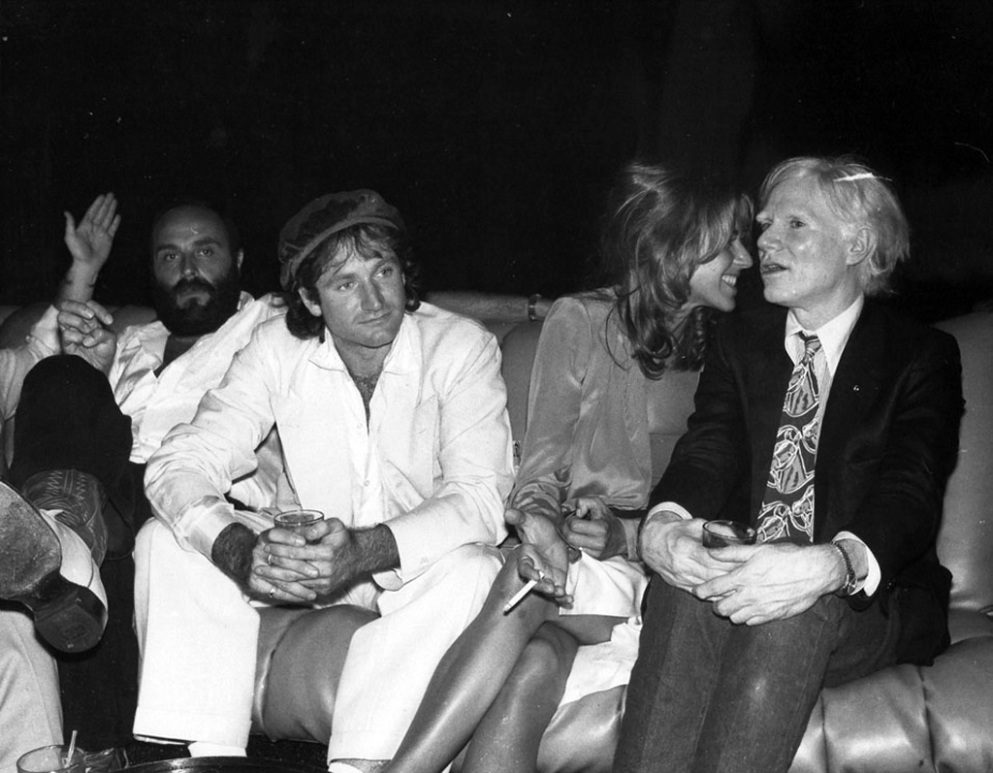
Robin Williams, Valerie Williams and Andy Warhol, 1979.
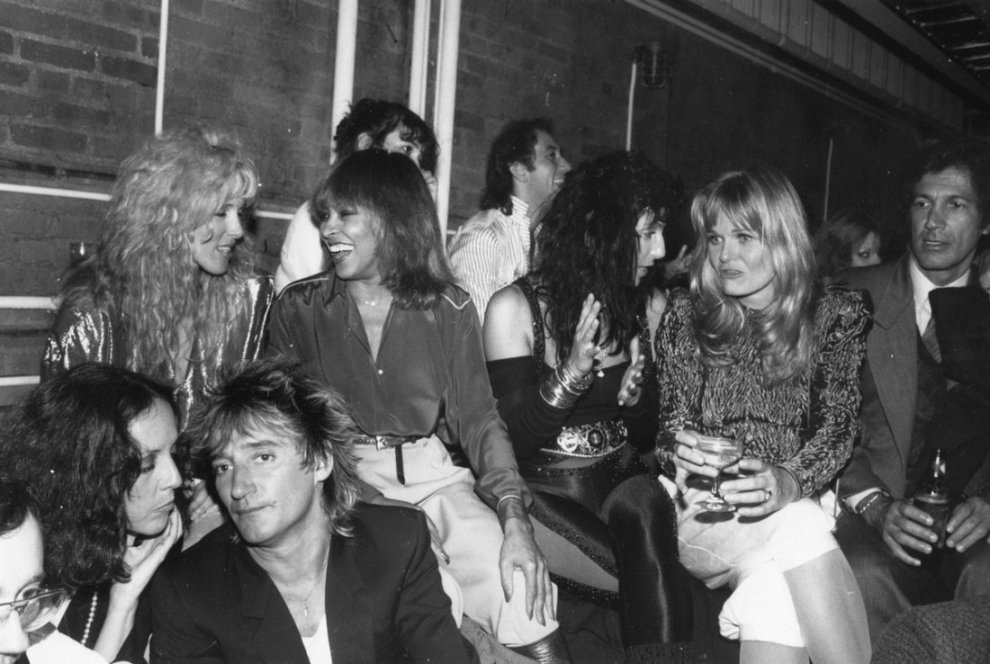
Rod Stewart, Alan Stewart, Tina Turner, Cher and Valerie Perrine.
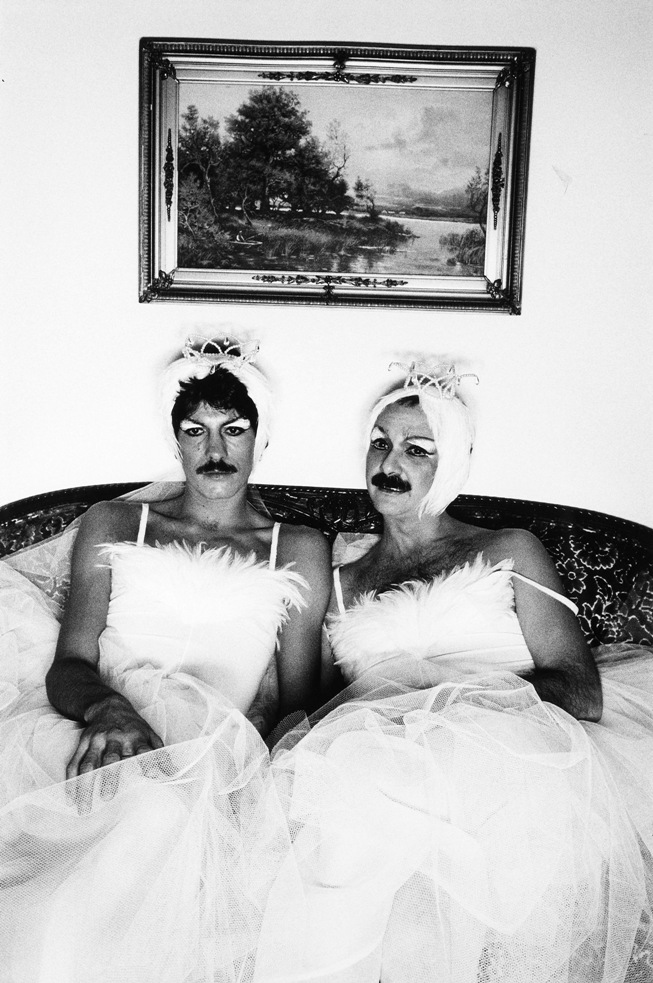
Swanlake by Hasse Persson, 1978.
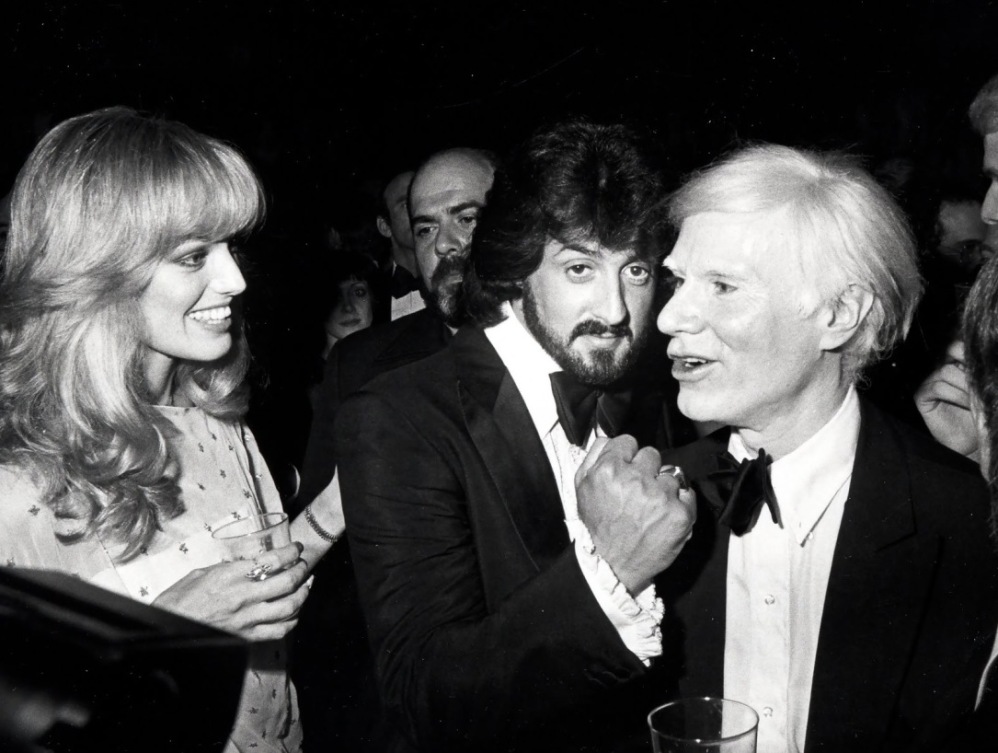
Susan Anton, Sylvester Stallone and Andy Warhol.
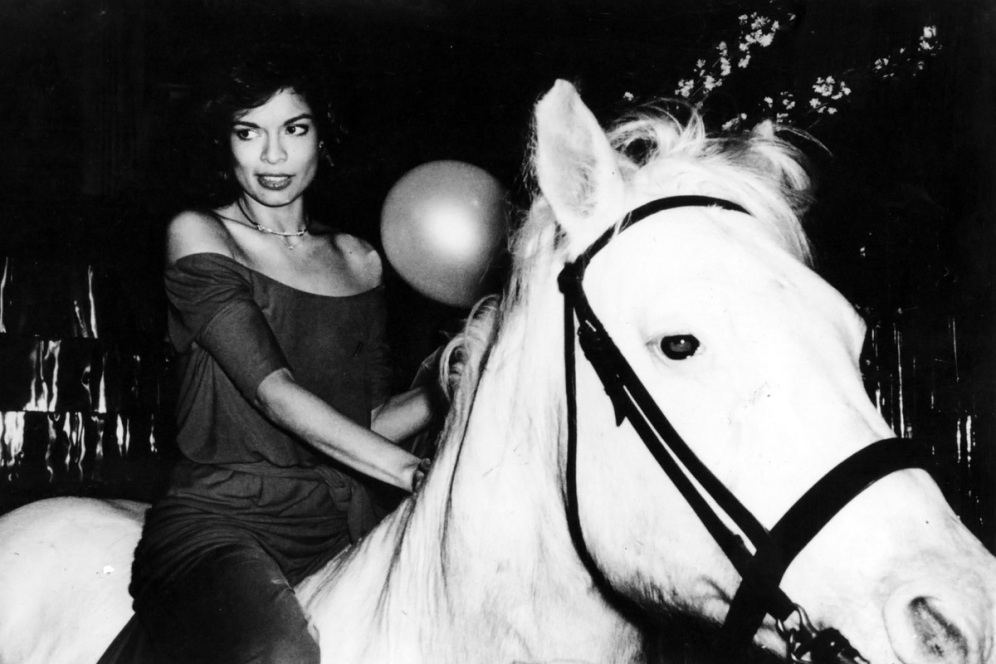
Bianca Jagger at Studio 54 at her birthday party, 1977.
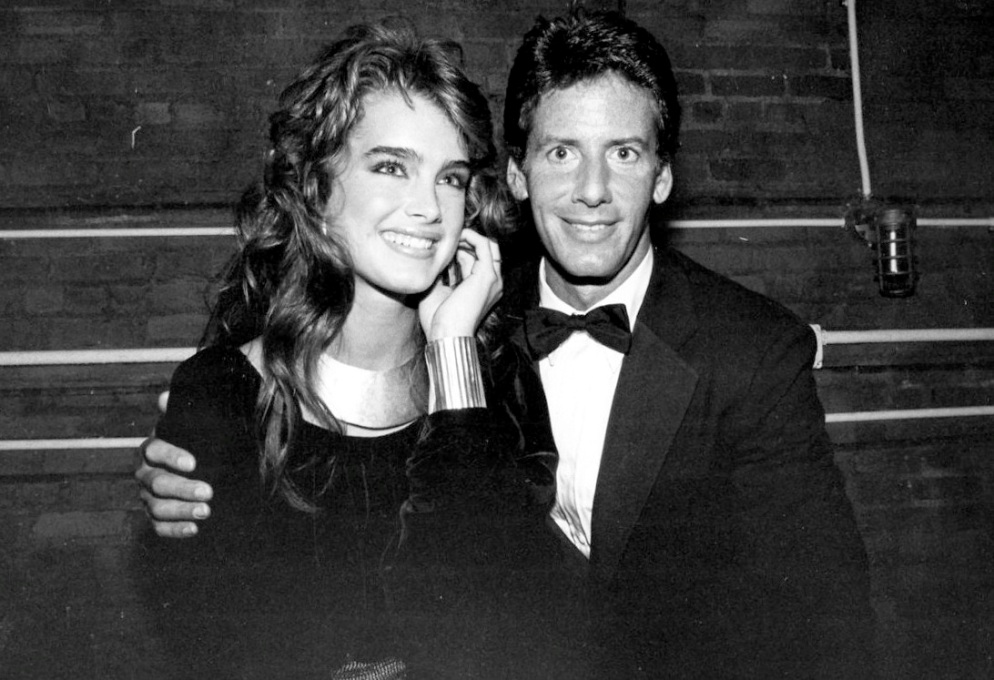
Brooke Shields and Calvin Klein, 1981.

Bianca Jagger and Mick Jagger.
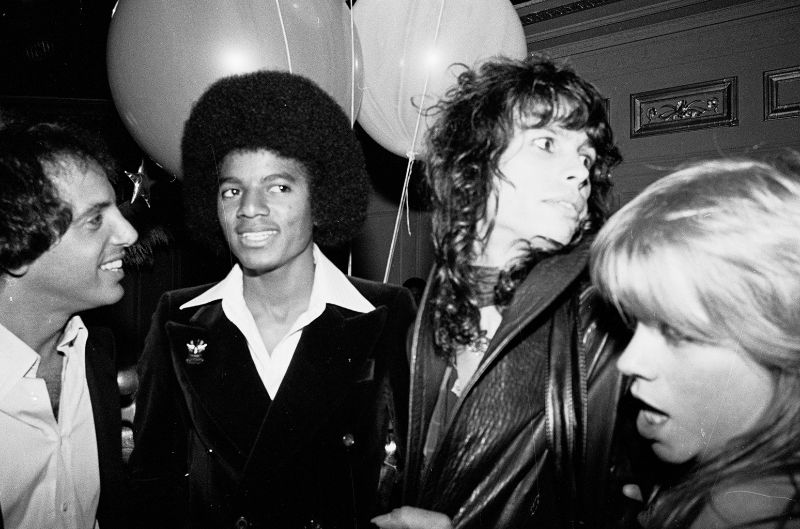
Steve Rubell, Michael Jackson, Steven Tyler and Cherie Currie.

Cher.

Elton John and Divine.

Olivia Newton-John.
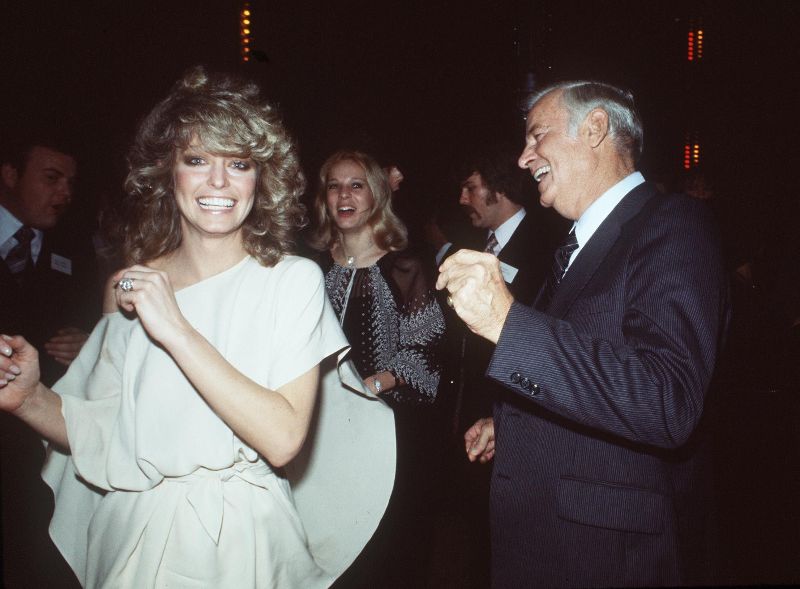
Farrah Fawcett and her father.

Grace Jones.

Cher.
(Photo credit: AP / Bygone Days via Flickr / Pinterest).